Articles

European mountain areas: focusing on trendsetting projects
In mid-September 350 experts and interested participants from 23 countries gathered in Lillehammer/NO to discuss the implementation of innovative projects in European mountain areas. By now in the mountains of Europe there are already multiple trendsetting projects in progress. One of the conclusions reached by the experts is that a better usage needs to be made of that potential, and that it also needs to be expanded further.
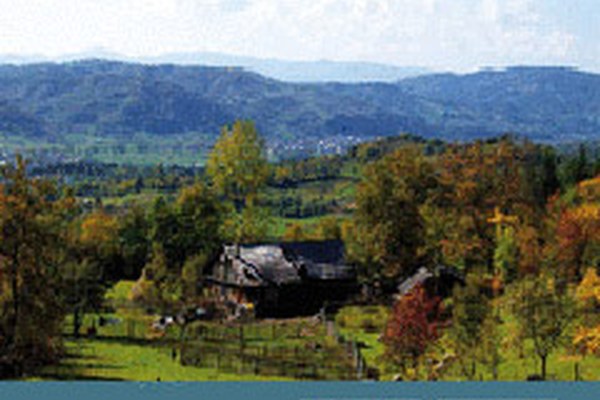
The true value of our mountains
The European Environmental Agency (EEA) has just published a new report titled Europe's ecological backbone: recognising the true value of our mountains. The report provides a comprehensive analysis of population numbers, ecosystems, water cycles, land use, and policies in mountain regions. The report focuses its attention on forces and interactions between the various issues and their impact on Europe's mountain areas.
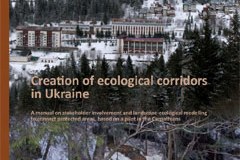
Experiences from the Carpathians: a manual on creation of ecological corridors
Based on a pilot project of realizing trans-boundary ecological connectivity in the Ukrainian Carpathians a manual on stakeholder involvement and landscape-ecological modeling to connect protected areas has recently been published.
First atlas of biodiversity risk in Europe
The new "Atlas of Biodiversity Risk" is the first of its kind to describe and summarise in a comprehensive, easy-to-read and richly illustrated form the major pressures, impacts and risks of biodiversity loss on a European and global level.
55 questions on alpine ecological connectivity
A joint research project of Econnect, the Platform Ecological Network under the Alpine Convention and the Ecological Continuum Initiative aims to identify "The 55 most urgent questions concerning ecological networks in the Alps" by bringing together all "alpine actors" such as national administrations, protected areas, researchers, stakeholders and various NGOs.

Less barriers, more nature!
Every day we build new obstacles on the migrating routes for animals and we prevent plants to spread freely. In most of the cases we are not even aware of this problem. How would it feel and look like, if our living spaces would suddenly get fragmented by obstacles we cannot easily overcome?
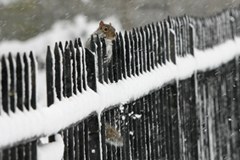
ECONNECT photo contest: clicks beyond borders
The partners in the Econnect project invite amateurs and professional photographers to make a pictorial record of ecosystem fragmentation in the Alps. The photo contest "Clicks beyond the borders" aims to visualize the importance of ecological links in the Alps in powerful images.
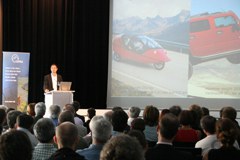
CIPRA Yearly Symposium: marginal creativity...
This year's CIPRA Symposium focuses on the socio-economic margins of the Alps. Why "margins"? Because the nearest hospital is a far away and the post office is only open in the morning; because the towns and cities are beckoning, and nature is gaining more and more ground. The prevailing process of urbanisation has little in the way of prospects to offer these mountain regions, whose potential is already low.

Photo-shooting the Alps
Time for photographers of the Alps to show off their best shots! The Permanent Secretariat of the Alpine Convention is organising a photo competition with the aim of publishing the twelve best photographs in a calendar. There will also be a special prize for each published photograph.
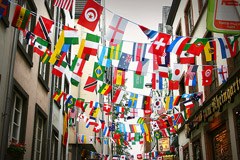
A milestone for alpMedia
With its current issue CIPRA's three-weekly Newsletter alpMedia is going out to more than 25'000 people throughout the Alps for the first time. CIPRA launched the alpMedia information project during the International Year of the Mountains 2002, and at that time the Newsletter was sent to just 1'700 people.
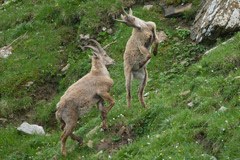
Gran Paradiso National Park: what is causing young ibexes to die out?
Since the foundation of Italy's first national park in 1922, the Alpine Ibex has been preserved from extinction for the past 100 years or so. Now the ibex population at the Gran Paradiso National Park/I is seriously at risk. Three quarters of the young animals are dying during their first year of life. In 1993 the population totalled around 5'000 animals; today the population at the Gran Paradiso National Park is just under half that number. It is still unclear what is causing the death of the young bi-ungulates.
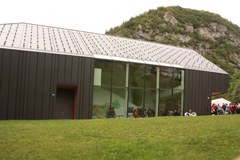
An Alpine Museum for Slovenia
In early August more than 1'000 mountaineers and mountain enthusiasts attended the opening of the Slovenian Alpine Museum (Slovenski planinski muzej - SPM) in Mojstrana/SI. The multitude of guests who attended underlines just how strong the demand is for such an institution in the Slovenian Alps. Slovenia owes its Alpine Museum first and foremost to Miro Eržen, who fought for the project for 25 years. The new Museum was officially inaugurated by the President of Slovenia Danilo Türk.

Europe's mountains: rich in biodiversity but increasingly vulnerable
In its study 10 Messages for 2010 - Mountain Ecosystems the European Environmental Agency takes a closer look at Europe's mountain regions. Compared with the lowlands, regions above the tree line are home to a richer variety of plant and animal species. The biggest threats include land abandonment, intensification of agriculture, infrastructure development, unsustainable exploitation and climate change.
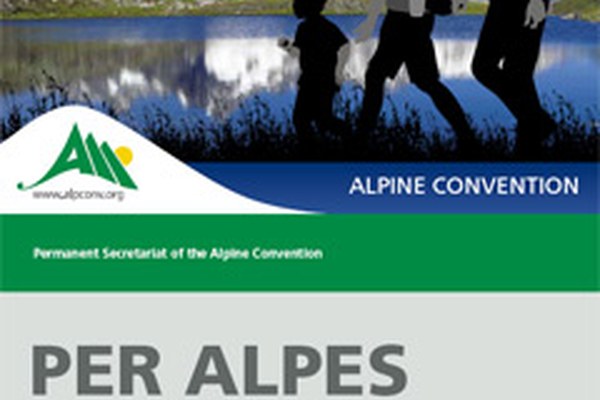
Per Alpes - Discovering the Alps in 20 circular walks
Such is the title of the hiking guide that has just been published by the Permanent Secretariat of the Alpine Convention. It showcases and describes 20 selected trekking routes across the alpine arc, touching on all the alpine states that are part of the Alpine Convention. By presenting the Alps as a tourist destination that goes beyond the national borders of the individual countries this book contributes in its way towards implementing the Alpine Convention's protocol on tourism.
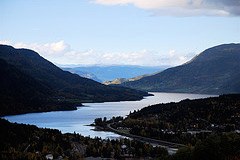
Innovation in mountain areas: European Mountain Convention
Innovation as the key driver for sustainable development in mountain areas: such is the theme of this year's European Mountain Convention, which is being held in Lillehammer, Norway, from 15th to 17th September. The conference will offer participants the opportunity to discuss sustainable development in their mountain regions and communities and to find out more about innovative projects in European mountain regions.
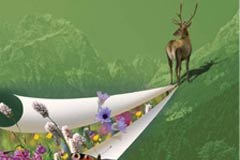
New publications for networking natural environments in the Alps
A great deal has been done and achieved in recent years to set up a pan-alpine ecological network. As part of its script series the German Federal Agency for Nature Conservation (BfN) has just published a report in English entitled Implementing a Pan-Alpine Ecological Network - A Compilation of Major Approaches, Tools and Activities. It comprises for the first time various documents, publications and reports supporting the implementation of an ecological network across the alpine arc. One chapter focuses on activities in the Carpathians. The publication can provide useful information to regions beyond the Alps, too.
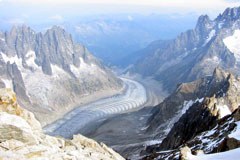
First transnational permafrost map of the Alps
The first standardised permafrost monitoring map of the Alpine Space is to be drawn up by researchers from Austria, Italy, Switzerland, France and Germany by 2011. The map will allow a better assessment of natural hazards and play an important role particularly for tourism and the growing infrastructure in the high-alpine region.
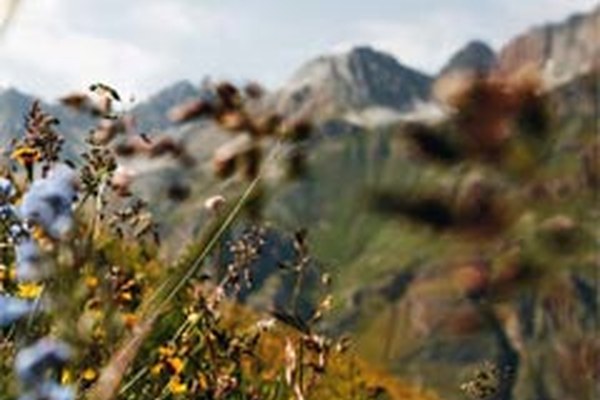
A network for foxes, people and edelweiss
CIPRA press release for the 2009 Annual Report entitled Biodiversity in the Alps
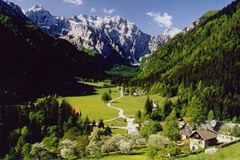
A treasure trove of ideas for climate projects - catalogue of measures online
Innovative ideas for implementing climate response measures are now available online at www.cipra.org/en/cc.alps/results-and-products (de/en/fr/it/sl). There anyone with an interest in the subject and municipalities in particular can draw inspiration from the many adaptation and mitigation measures for climate change.
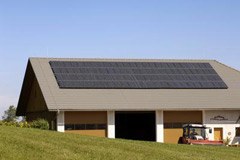
Alpine regions join forces to tackle climate change
Autumn 2010 is to see the start of the first climate projects as part of a transnational LEADER project initiated by CIPRA. LEADER regions from Austria, Germany, Italy, Slovenia and dedicated regions in Switzerland and France want to implement sustainable climate response measures and exchange their knowledge and experience at workshops and field trips.
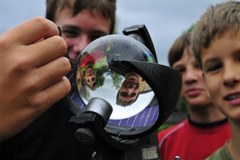
What happened to all the examples of good practice?
cc.alps is interested in developing exemplary climate response measures from its cc.alps competition. Project managers are invited to update the progress and developments they have made since 2008.
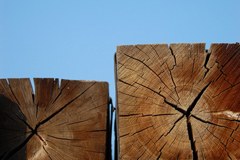
Compacts for everyone!
The cc.alps compacts not only deal with issues relating to the Alps, they also reflect the diversity of languages across the Alpine arc. Indeed, the Transport compact is now available online in Italian, French and Slovenian.
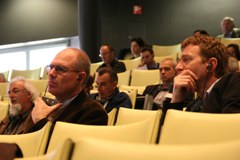
cc.alps is on the move throughout the Alps!
Showcasing cc.alps results and raising the awareness of target groups at events throughout the Alps remains firmly on the agenda for 2010, too.

"Cool heads in the hothouse!" Interview with a cc.alps award winner
"30 per cent are 'converts' from cars to public transport!" Switzerland's IG bus alpin community of interests picked up one of prizes worth EUR 10,000 in the cc.alps competition. cc.alps team member Christine Székely spoke to Samuel Bernhard, the IG bus alpin project manager, about the successful project.
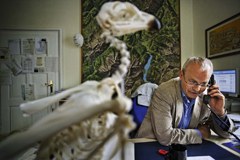
Nature abhors borders: Ecological Continuum and Econnect
CIPRA sees itself as something of a networker. And this applies to nature conservation as well. It brings officials, local authorities and scientists together, regardless of national borders. After all, animal and plant migrations don’t stop at border barriers either.
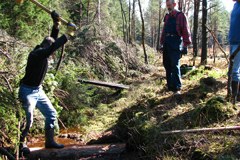
Fen felling
It‘s 7 am in early summer. A clack, clack sound drifts through the veil of mist hanging over the Ödmoos area of Bavaria. Work is already in full swing. You need to start early, as it gets very hot during the day. Stefan raises his axe and starts to hack away at the clumps of bushes. The 23-year-old is studying forestry science and works as a volunteer restoring the area‘s natural habitat. He has always had a keen interest in fens and bogs as diverse habitats, ever since he was a boy. And now he also knows that they make a valuable contribution to climate protection.
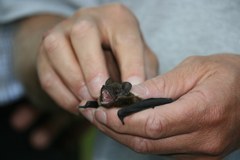
The chestnut forest plays host to a rare guest: Alliance in the Alps network of municipalities
The little bat somehow looked different. Filigree in form, brownish in colour, and with a ringed wing it huddled in the corner of the nesting box on the chestnut tree. Nicola Zambelli put on his gloves and pulled gently on the wing tip to examine the ring.
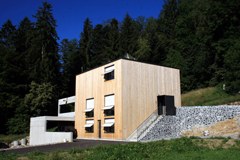
Discovering common ground
Liechtenstein is a small country, so you’re always bumping into people. And although everybody sort of knows everybody else, they don’t really. Energy-efficient construction is a bit like that. Or rather, it was until October 2009. It was then that CIPRA, which is better known for using its climalp project (see box) to circulate know-how on energy-efficient construction and renovation throughout the Alps, brought its own people together for a change.
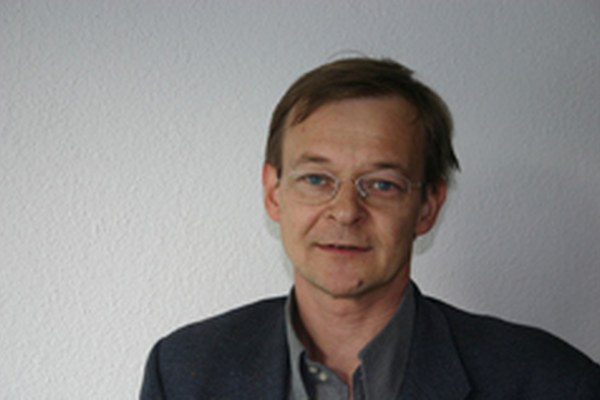
“Bolzano, the energy source”
ASSOCIATION “Alpine Town of the Year” - Bolzano’s municipal councillor Helmuth Moroder explains how the “2009 Alpine Town of the Year” intends to achieve ITS aim OF BEING carbon-neutral by 2030.
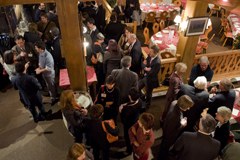
And yet it moves!
Evian/F, March 2009. A huge, windowless room with cold artificial lighting. The only link to nature inside the conference centre is a spectacular bouquet of flowers picked, it would seem, from beyond the Alps. Seated at long tables are the Environment Ministers and State Secretaries of all the Alpine states.